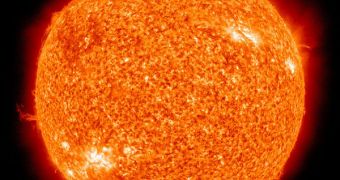There is no denying the fact that Albert Einstein's theory of general relativity is a tremendous achievement. But while verifying it is easy, answering the riddles it poses is not. Now, a research team is proposing using the Sun to clear the remaining mysteries related to gravity once and for all. '
What Einstein managed to explain with amazing brilliance was the action of gravity in a vacuum. This is very well understood and explained through his equations. Similarly, his calculations can be reduced to Newton's when it comes to understanding gravity inside our planet.
However, while Earth may produce enough gravitational pull to keep the Moon in place and us on its surface, studying it doesn't even come close to the real prize in astrophysics, which is figuring out how the Sun, massive stars, neutron stars and black holes tick.
Inside extremely massive objects, gravity may take on peculiar behaviors, which experts are trying to understand. What the team is proposing is using the Sun as a proxy to study these behaviors in much larger cosmic bodies, Technology Review reports.
What it all boils down to is finding out how spacetime distortions occur inside matter. In a vacuum, the concept is easier to grasp, but things change dramatically in solid, gaseous, liquid or plasma matter.
Researchers at the Technical University of Lisbon in Portugal, led by expert Jordi Casanellas, now say that small modifications to gravity should be discernible inside the Sun even with our current observations means.
An added bonus to studying diverse gravity-altering theories in this manner is that the intricate inner workings of the Sun are understood to a much higher degrees than, for example, a black hole's.
“Any corrections would affect the thermal balance and, in turn, the temperature profile inside the star, leaving potentially observable signatures,” the investigators write in the online journal arXiv.
“Our results show that the Sun is a very good testing ground to constrain generic modified theories of gravity,” the team adds. “The high accuracy of current solar models and precise observations allow to test standard gravity against alternative theories at unprecedented levels,” the researchers say.
They add that alternative theories imply phenomena that would most certainly affect the evolution and equilibrium structure inside the Sun, which would in turn produce different core temperature profiles. Acoustic modes and solar neutrino fluxes would also be changed.
As such, the coupling parameters each of these theories propose as variations from the norm could be discovered by comparing theoretical and real-life data. The information obtained in this manner could then be applied to models of heavier celestial bodies, including black holes.

 14 DAY TRIAL //
14 DAY TRIAL //